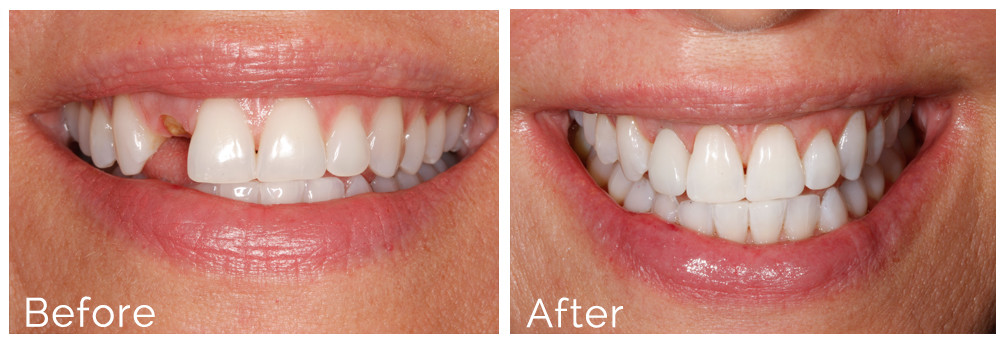Dental Sense - Questions
Table of Contents3 Simple Techniques For Dental SenseThe 9-Minute Rule for Dental SenseFacts About Dental Sense UncoveredThe 2-Minute Rule for Dental Sense
are medical tools operatively dental implanted right into the jaw to restore a person's ability to eat or their look. They provide assistance for synthetic (phony) teeth, such as crowns, bridges, or dentures. When a tooth is lost as a result of injury or condition, a person can experience complications such as rapid bone loss, faulty speech, or changes to eating patterns that lead to pain.Oral implant systems contain an oral implant body and oral implant joint and may likewise include an abutment fixation screw. Same day dental implants. The dental implant body is operatively inserted in the jawbone in place of the tooth's root. The oral implant joint is normally connected to the dental implant body by the abutment addiction screw and expands with gums into the mouth to sustain the affixed synthetic teeth
(https://www.behance.net/matthewmusic)Structure of The Dental Implant System picking dental implants, speak to your dental service provider regarding the prospective benefits and dangers, and whether you are a prospect for the procedure. Points to think about: Your general health and wellness is a vital variable in identifying whether you are a great prospect for oral implants, how long it will certainly require to recover, and for how long the dental implant might remain in area.
Smoking may influence the recovery process and decrease the long-lasting success of the dental implant. The healing process for the implant body might take several months or longer, during which time you usually have a short-term abutment in location of the tooth. the oral implant treatment: Meticulously comply with the oral hygiene instructions given to you by your dental company.
Top Guidelines Of Dental Sense
Implant failure can result in the demand for an additional operation to fix or change the dental implant system. Brings back the capability to chew Brings back cosmetic appearance Aids maintain the jawbone from shrinking as a result of bone loss Maintains the health and wellness of the bordering bone and gum tissues Aids maintain adjacent (nearby) teeth steady Improves high quality of life Damage to bordering all-natural teeth throughout implant placement Injury to the surrounding cells throughout surgical treatment, such as sinus opening Injury during surgical treatment (for instance, crack of surrounding jawbone) Insufficient feature, such as really feeling like the teeth do not bite with each other normally An experience that the tooth hangs or turning in area arising from a joint screw loosening up Implant body failure (looseness of the dental implant body) because of systemic infection, which may be extra most likely in patients with uncontrolled diabetics issues as a result of neighborhood infection in bone and gum tissues sustaining the dental implant body as a result of postponed healing, which may be more probable in individuals who smoke Difficulty cleansing the gum tissues around the implant, resulting in poor dental health Untreated gum disease Post-surgical tingling because of nerve impingement or damages Always inform healthcare service providers and imaging technicians that you have dental implants before any type of magnetic resonance imaging (MRI) or x-ray procedures.
FDA is not aware of any type of unfavorable events reported for MRI or x-ray treatments with dental implants. Oral implants systems are typically made from materials that adhere to global agreement requirements of the International Organization for Standardization (ISO) or ASTM International. These requirements have information of what makes a safe material.

A dental implant is a structure that changes a missing out on tooth. With screw-like tools, the surgeon inserts a dental implant right into the jawbone, and it acts as an anchor for a synthetic tooth, called a crown.
10 Simple Techniques For Dental Sense
Some individuals are not qualified for oral implant surgery. It is for dental cosmetic surgeons to run on people with: acute illnessuncontrollable metabolic diseasebone or soft tissue illness or infectionIf these issues are resolved, an individual can have the surgical procedure. In, oral doctors avoid running on individuals with: If individuals with any of the above undertake oral implant surgical treatment, there is a greater danger of the implant stopping working.

Dental implant surgical treatment is a customized process. It's not the same for everyone. But the complying with provides a general review of what you can anticipate your dental professional, oral specialist, periodontist or prosthodontist to do: Position the dental implant operatively. Offer you time to recover. Connect the blog post and last crown, bridge or denture.
Next, your doctor will thoroughly position the dental implant right into your jaw. If your implant is near the front of your mouth, your dental expert will make a temporary tooth for you to use until you recover.
More About Dental Sense
Your service provider can tell you what to expect in your circumstance. Throughout the healing phase, your jawbone must fuse to the oral implant. This procedure, called osseointegration, is critical for security and lasting success. This procedure can take anywhere from three to nine months. In many cases, it might take much longer.
As soon as your dental implant heals, your dentist can affix the abutment (tiny connector blog post) and your final restoration (crown, bridge or denture). This typically takes about one hour to complete and may need a 2nd minor surgery. You should not really feel any discomfort throughout your dental implant treatment because your service provider will certainly use drug to numb your gum tissues.